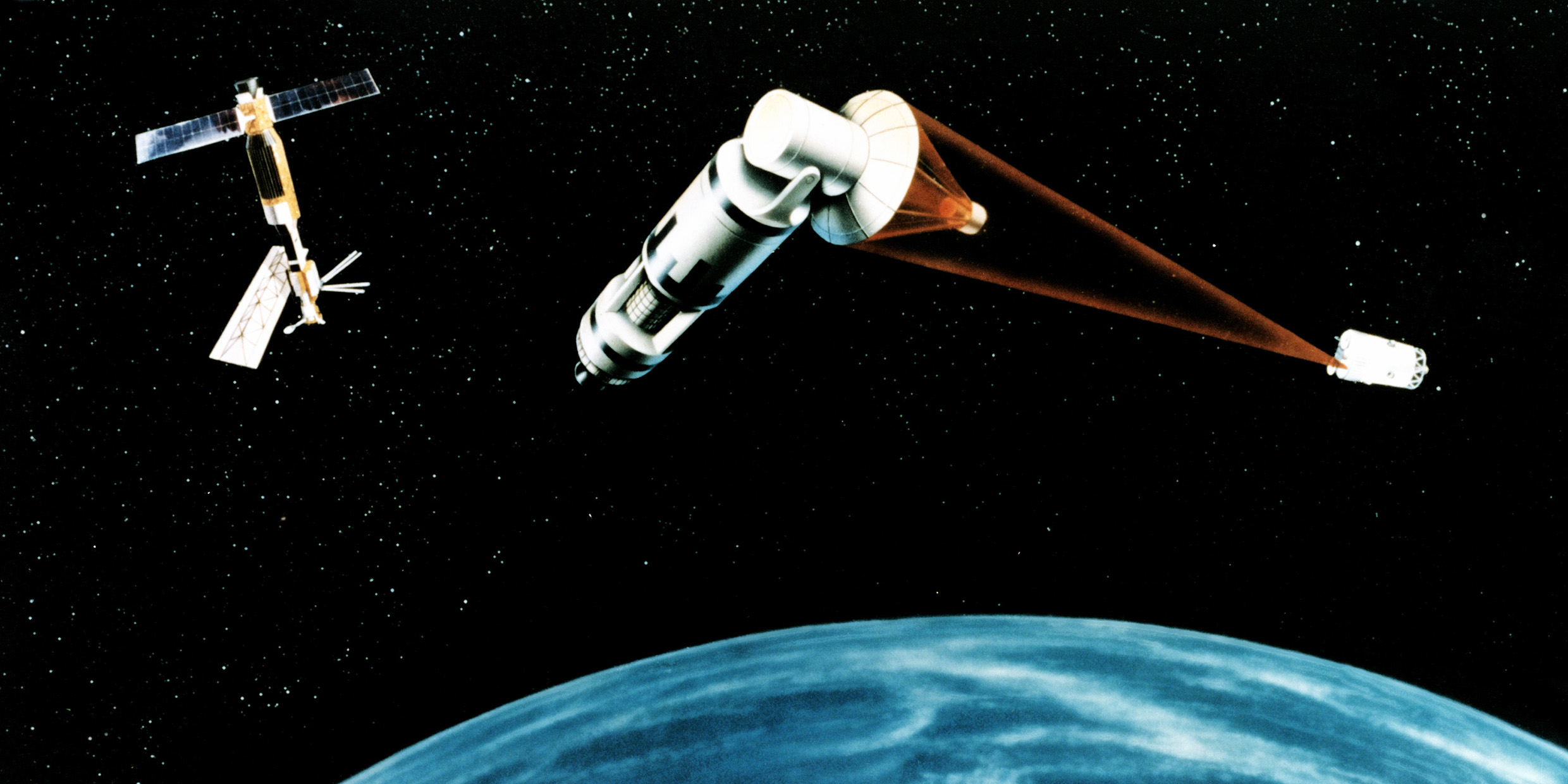Originally published 2 June 1986
“Science will make the Kraals invincible.”
That line was spoken last week on Doctor Who, the British science fiction serial that is aired each weekday evening on Public Television. The speaker was Styggron, the leader of the Kraals, an alien race at war with Earth.
The idea that science can confer invincibility is a stock theme of science fiction. It is also the theme of President Reagan’s Strategic Defense Initiative (SDI), a space-based missile defense system often called “Star Wars.” Supporters of Star Wars are determined to turn science fiction into science fact.
Building the system will require major breakthroughs in materials, lasers, electronics, power plant design, and computer software development. Not since the Manhattan Project of World War II, the government-sponsored program to build the atomic bomb, has the scientific community been asked to take a greater step into the unknown.
Massive amounts of research money are at stake. The project is fraught with moral and political dilemmas. Not surprisingly, SDI has split the scientific community into two highly vocal camps.
Three weeks ago, 3700 senior scientists, including 15 Nobel laureates, signed a pledge not to participate in SDI research. Many of them believe the project is morally or politically indefensible. Others simply think SDI is technically impossible. A week later, 80 prominent scientists vowed support for SDI. They agree with Reagan that the project will serve the cause of peace, and they are confident that any technical problems can be solved.
Obstacles are staggering
The problems are formidable. For example, the heart of the system will be powerful lasers that will knock enemy missiles from the sky at the speed of light. Batteries or solar panels are not suitable for supplying the huge amounts of energy the weapons will require. It will be necessary to put into space power plants of a far greater capacity than anything ever attempted.
As reported recently in Science magazine, the Department of Energy wants to spend $450 million over the next five years to design and build orbiting nuclear reactors for SDI. The first experimental space reactors will test an ensemble of daring new technologies. The hope is that a 300 kilowatt reactor will be ready to go into orbit in 1993, as the forerunner of huge multi-megawatt nuclear power stations that would supply the energy to run orbiting battle platforms.
If you can imagine putting a small Chernobyl reactor into the Challenger space shuttle and blasting the whole package safely into space, you have a sense of the problems that must be solved.
A second technical problem is that of writing the computer programs that would control the SDI system.
If SDI is ever used in war, computers will control every aspect of the system. Human decision-making would be too slow. Computers will identify enemy missiles and decide if their intent is hostile. Computers will make the decision to fire. Computers will assess the damage. Computers will have a power over the fate of the human race unlike anything ever before imagined.
It has been estimated that the required software could consist of 100 million lines of programming code, written by hundreds or thousands of programmers. That is hundreds of times more code than is required for controlling a mainframe computer. Many scientists believe that writing and debugging such programs is an impossible task, and that in any case the programs could be realistically tested only in a battle situation. Others believe that by appropriately delegating battle decision-making to many independent computers, the system can be tested and made to work.
The costs and benefits
And there is more. There are the laser weapons themselves, the communications system, and the surveillance devices — all involving new technologies.
There is no question that if SDI goes forward, dramatic breakthroughs will accrue to science. And there will be “spin-off” technologies — materials, electronics, lasers — of potential benefit to mankind. On the other hand, a staggering amount of money and human effort will be spent on a system of war that many experts believe cannot work, and is undesirable even if it does.
Never before has the scientific community been asked to confront technical, political, and moral questions of such complexity. And perhaps the most fundamental question of all is whether, like the Kraals, we should rely upon science to make us invincible.
After the end of the Cold War, and with a change of administration in Washington D.C., the SDI program was officially ended in 1993. Of course, the effort to militarize space continues under other guises. ‑Ed.



